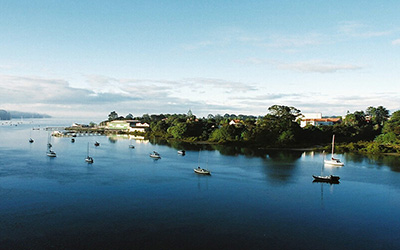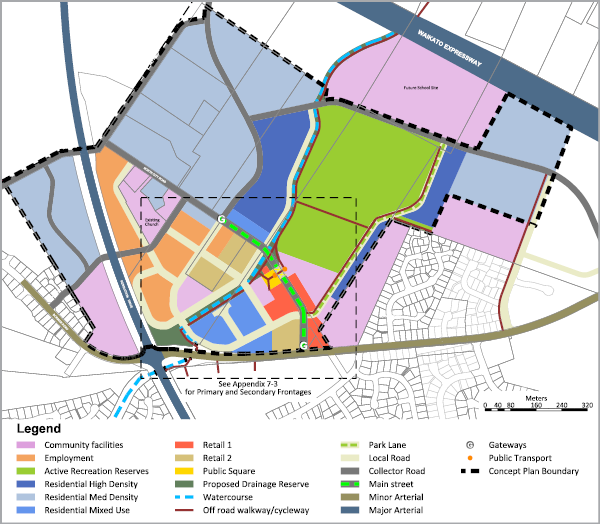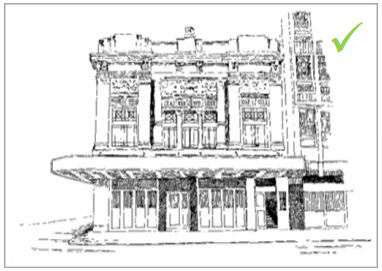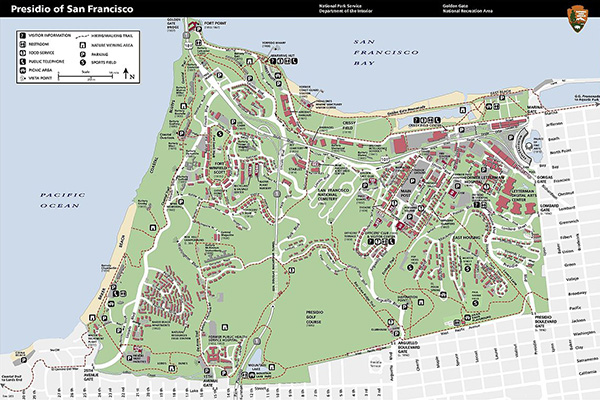Hobsonville-pointing satellite growth centre


Developer-Led or Developer-Led: Ironically, Auckland region’s first contemporary example of effective urban design at scale, is developer-led. But that is developer singular, and none other than the state, in the form of hlc, the recently re-named and repurposed Hobsonville Land Company. image Jalcon Home
While it was all about density, it said more about the limitations of developer-led planning. Presenting this month’s Warkworth Town Hall Talk, Mark Fraser, precinct manager for hlc, detailed the lengths necessary to dissuade builders from building same-old-same-old, space-swallowing houses.
hlc was established as the Hobsonville Land Company by the Housing New Zealand Corporation, after it bought the eponymous airbase from the Royal New Zealand Air Force in 2002. Hobsonville Point is Australasia’s largest single housing development, yet it will only accommodate half the population growth that is scheduled to occur in Mahurangi’s tidehead town.
At Hobsonville Point, Aucklanders have finally been offered something approaching affordable housing at scale combined with superior design, rather than dwellings designed to maximise the margins of myriad developers. At Warkworth, the apprehension apparent by the questions to the speaker was that, with the land the subject of the structure-plan process mostly already in the hands of multiple developers, some of whom have already attempted to pre-empt the process, the prospects for a cohesively planned, compact town may have well and truly bolted.

Good for Rototuna: What’s good for Rototuna, on Hamilton’s northern perimeter, would be equally good for Warkworth, given how, without deploying every appropriate town-planning tool, the transformation planned for Mahurangi’s tidehead town would potentially leave it unrecognisable, and not in a good way. image Hamilton City Council
But not necessarily so. What was achieved at Hobsonville Point, in the first instance, was an example of comprehensive urban design, albeit made much more straightforward by there being one landowner; a landowner with a vision. As Hamilton, with its long-awaited Rototuna Town Centre, has demonstrated, urban design can also be achieved where multiple landowners and developers are involved. Critically, the council and community produce a tightly integrated structure plan, special zone, and design guide, then, for those developers who respect it, life is a breeze, and for those who don’t—not so much.
hlc, with Hobsonville Point under its belt, is now working its magic in Avondale, Māngere, Mount Roskill, and Northcote. But these are all single-owner developments, primarily of Housing New Zealand land. For hlc to work in Warkworth would require the purchase of already expensive land, and willing sellers would, in all probability, be few and far between. If this were the Muldoon era, or a motorway, compulsory acquisition would rule. But nor would the far less draconian option—a plan change to create a Warkworth Zone—likely go completely uncontested.
Given what stands to be gained by all the stakeholders—the community, the council, existing landowner-developers, and the government—it would be delinquent to not at least explore the possibility of creating a satellite growth centre exemplar, and antidote to the urban sprawl that poisons the prospects of building healthy, pleasant, zero-carbon places to live.
Beginning with the community, an attractive new town that seamlessly connects with the old, and is not clogged with cars, would be a huge gain over simply adding suburbs. But more than that, the new town must not only retain the feature that makes Warkworth unique—the sublimely soul-enriching indigenous forest backdrop of the tidal town basin—but ring the town with a natural, unambiguous ‘city wall’ that affirms and reassures that all that lies beyond is inviolately natural or rural. Both the urban design objectives and the process have the potential to ensure that locals don’t increasingly become strangers in their own town.

Ending Faceless Façades: The reason so much contemporary development is life-sappingly soulless is the blank façades that typically face public spaces. Effectively outlawed by the Rototuna Town Centre design guide, as inappropriate, to which every resident would say, good riddance. image Hamilton City Council
For the council, dual objectives would be better ensured: density and growth. Green-fields development is exactly where density can be achieved without disrupting existing leafy suburbs, including those of Warkworth, which could, conceivably be given better protection, including from poorly expedited infill development. Warkworth can potentially make a greater contribution to absorbing regional growth, with the proposed collaborative urban design, than without it, but it would also provide a better return on the costs of the structure-plan process it is already committed to. Indeed, it potentially overcomes the famously fraught ability of typically deployed planning processes to achieve their stated objectives.
The government has much to gain, given its goal of increasing supply of affordable homes nationwide, but particularly in the Auckland region, where that demand is greatest.
Existing developers might be the last to be convinced to take time out from pursuing their current plans and consider the potential of a new development landscape. Greater density, in itself, has the potential to greatly increase the developable value of the land with which they have to work. Clear, agreed rules, once in place, would enable developers to get on with delivering high quality affordable homes, with minimum compliance and consultancy costs, and delays.
The other, strategic benefit of the special-zone pathway is that it empowers the Auckland Design Office to engage at the beginning of the process, rather than at the end, by which time most, if not all, of the horses will have bolted. The response to the town-hall talk delivered by design-office manager Ludo Campbell-Reid, left no doubt that the services of region’s design champion were sorely needed, and desired.

Self-Funding Exemplar: San Diego turned Sydney onto it, and representatives from both exemplars of self-funding parks were hosted by Auckland Council, in 2016, but too late to influence Hobsonville Point. Ironically, the self-funding model was pioneered in Auckland, by Sir John Logan Campbell—Cornwall Park has been self-funding since 1901. image National Park Service
If, after exploring the option of developing Warkworth the nice way, the community and its council is forced to do it the same-old-same-old hard way, so be it. But if reaction to Mark Fraser’s town-hall talk on density is the slightest guide, and if the 224 pieces of feedbackRyan Bradley, Auckland Council principal planner pers. comm: We had 224 pieces of feedback in April. We are reading these and drawing out some of the themes now. We are aiming to have a consultation report up on the webpage by the end of May. to just the structure plan topic papers, and response to other engagement opportunities to date, is any indication, it will not be the community that drags its feet.
None of this, of course, is to suggest that Hobsonville Point is the last word in zero-carbon, green/brownfield planning, not least because, viewed from another perspective, the opportunity for a self-funded, Presidio-styled regional park slipped through the city’s fingers. The Presidio Park, and, closer to home, the self-funded Sydney Harbour Federation Trust it inspired, should have cast in stone that the first responsibility, when ex-military land is developed, is that a major park result.
The park crying out to be created of course, axiomatic to Warkworth as a satellite growth centre, is the lineal, Mahurangi River park—a park that ties together the old and the new, the young and the elderly, and the passive with the active.
Mahurangi, a shining swimmable, walkable, meaningfully zero-carbon vision for the future.
